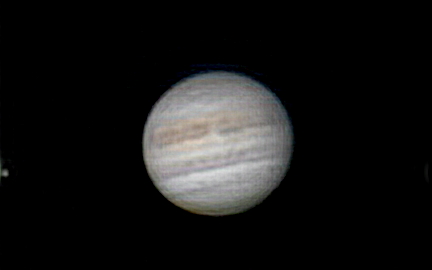D850 DSLR imaging: Mirach Ghost Galaxy, Helix Nebula,
Moons of Neptune & Uranus
Posted: 15 October 2020
During the Explore Alliance OpenGOTO Forum live show on Wednesday, 14 October 2020, "wavelet image processing" was demonstrated. I use Lynkeos software on my Mac for processing planetary videos and although it has wavelet processing I never really tried it. After seeing wavelets demonstrated in other applications I decided to give it a serious try on the three previous session videos of Jupiter, Saturn, and Mars. The wavelet processing sliders are adjusted in the order shown below, with the amount of each adjustment depending on the image, camera, resolution, and focal length used. As seen in the newly processed images, the improvement can be significant.




Wednesday had some smoke from California wildfires in our sky.
|
Open: Wednesday, 14 October 2020, 1810 MST Temperature: 79°F |
Session: 1538 Conditions: Clear, some smoke |
Equipment:
12" f/8 LX600 w/StarLock
2" 24mm UWA eyepiece
2" 9mm 100° eyepiece
2" 14mm 100° eyepiece
Filter Slider System
UHC, HA, OIII filters
Camera:
D850 DSLR
1817 MST: LX600 ON, StarLock OFF, High Precision OFF.
Viewed Jupiter and 3 moons, 102X and 271X. Viewed Saturn and 3 moons, 271X.
Then relaxed on the observatory patio bench while waiting for the sky to get darker. Our current extended period of warm weather has made relaxing on the bench very enjoyable.
1838 MST: Mars was rising over the hill to the east.
1840 MST: saw a nice bright meteor (as bright as Saturn) with a long trail going eastward from near Cygnus to Andromeda.
1900 MST: back inside the observatory.
Took this handheld D850 DSLR photo (f/2.8, 2 seconds, ISO 4000, FL 24mm) of the southern sky showing Saturn, Jupiter, and the Milky Way. Saturn and Jupiter are getting closer together in the sky on their way to a very close conjunction (0.1°) on 21 December 2020.

Mouseover or tap on image for labels
Viewed Saturn again, 271X.
Slewed to the star Mirach and viewed NGC404 (Mirach Ghost Galaxy), 102X, 174X, and 271X. The galaxy was easily seen at all three magnifications.
1920-1949 MST: did the AutoStar Guided Tour "Tonight's Best" and viewed several objects, 102X. I had not done a lot of just observing for a long time. Just observing is fun. Viewed the following: M31 (Andromeda Galaxy), M32 (galaxy), Double Cluster (open star clusters), M34 (open cluster), M13 (Great Globular Cluster in Hercules), M92 (globular cluster), M6 (Butterfly Cluster), M7 (open cluster), M8 (Lagoon Nebula), M22 (globular cluster), M11 (Wild Duck Cluster), M57 (Ring Nebula), M27 (Dumbbell Nebula), M15 (globular cluster), M2 (globular cluster), NGC7293 (Helix Nebula), M52 (open cluster), and Albireo (double star).
Then began preparing the D850 DSLR for prime focus imaging using the Filter Slider System. Focused on Mirach with the UHC filter using the Meade Bahtinov Mask and locked the telescope mirror.
2007 MST: StarLock ON.
This is NGC404 (Mirach Ghost Galaxy), StarLock autoguided, 5 minutes, ISO 6400, UHC filter. The galaxy is at 7 o'clock from the bright star Mirach at the center.

Slewed to NGC7293 (Helix Nebula) and did StarLock autoguided ISO 6400 exposures using the UHC filter (5 minutes), Hydrogen-Alpha filter (10 minutes), and Oxygen III filter (10 minutes), as seen here left to right with the final merged image.




2104 MST: StarLock OFF.
Slewed to Neptune to image it at prime focus (no filter), 10 seconds, ISO 1600. Then imaged Uranus, 10 seconds, ISO 3200. These cropped images show the moon Triton at Neptune and several moons of Uranus.


2125 MST: ended imaging.
Viewed Uranus and Neptune, 102X and 271X.
Viewed NGC7293 (Helix Nebula), 102X and 174X, with and without the UHC filter. It was too faint with the filter at 174X, but was nice at 102X with the filter.
2147 MST: LX600 OFF.
2157 MST: did a Sky Quality reading and reported the result to Globe at Night.
|
Close: Wednesday, 14 October 2020, 2203 MST Temperature: 70°F |
Session Length: 3h 53m Conditions: Clear, smoke, SQM 21.05 |
Comments are welcome using Email. Twitter users can use the button below to tweet this report to their followers. Thanks.
Cassiopeia Observatory Home Page
Copyright ©2020 Michael L. Weasner / mweasner@me.com
URL = http://www.weasner.com/co/Reports/2020/10/15/index.html
